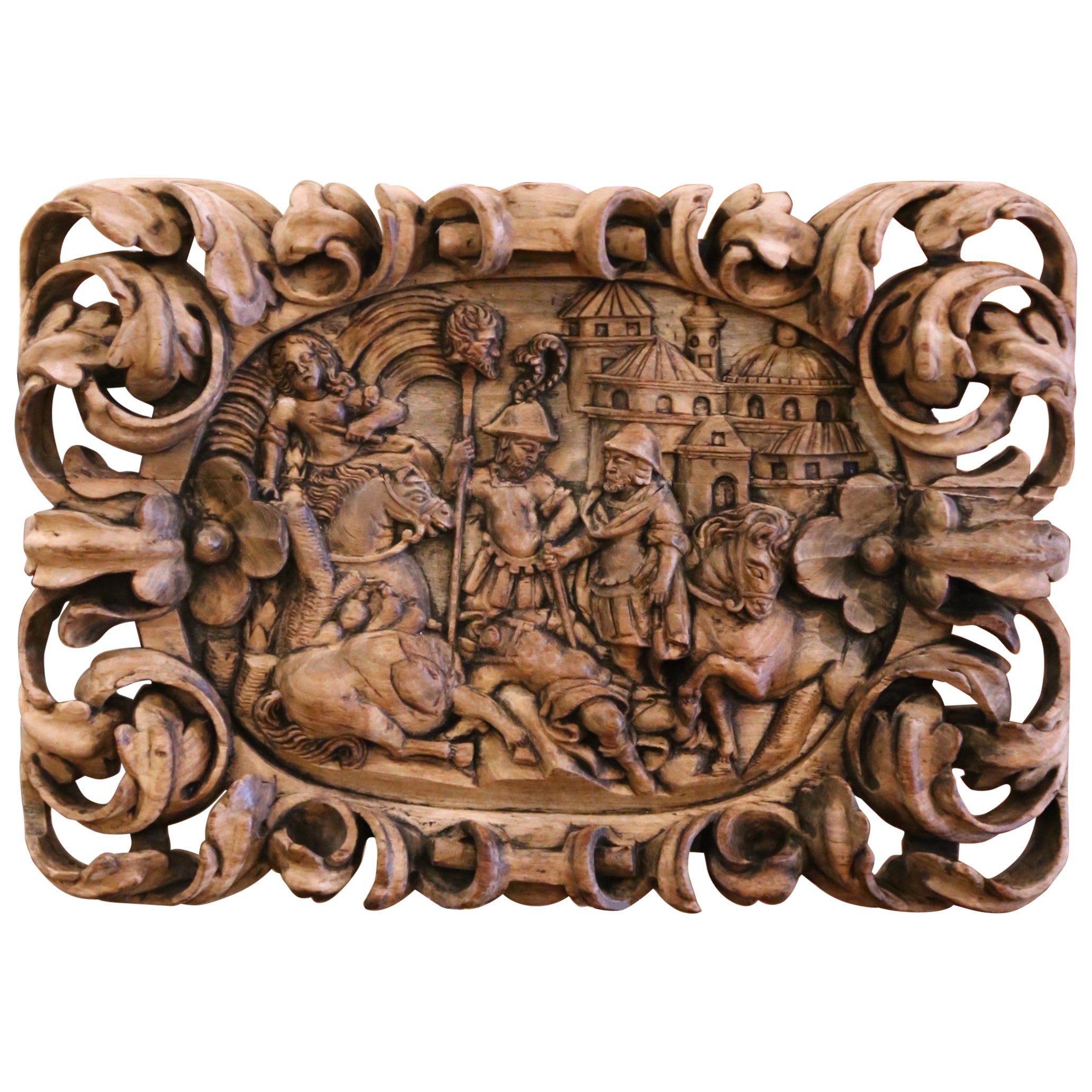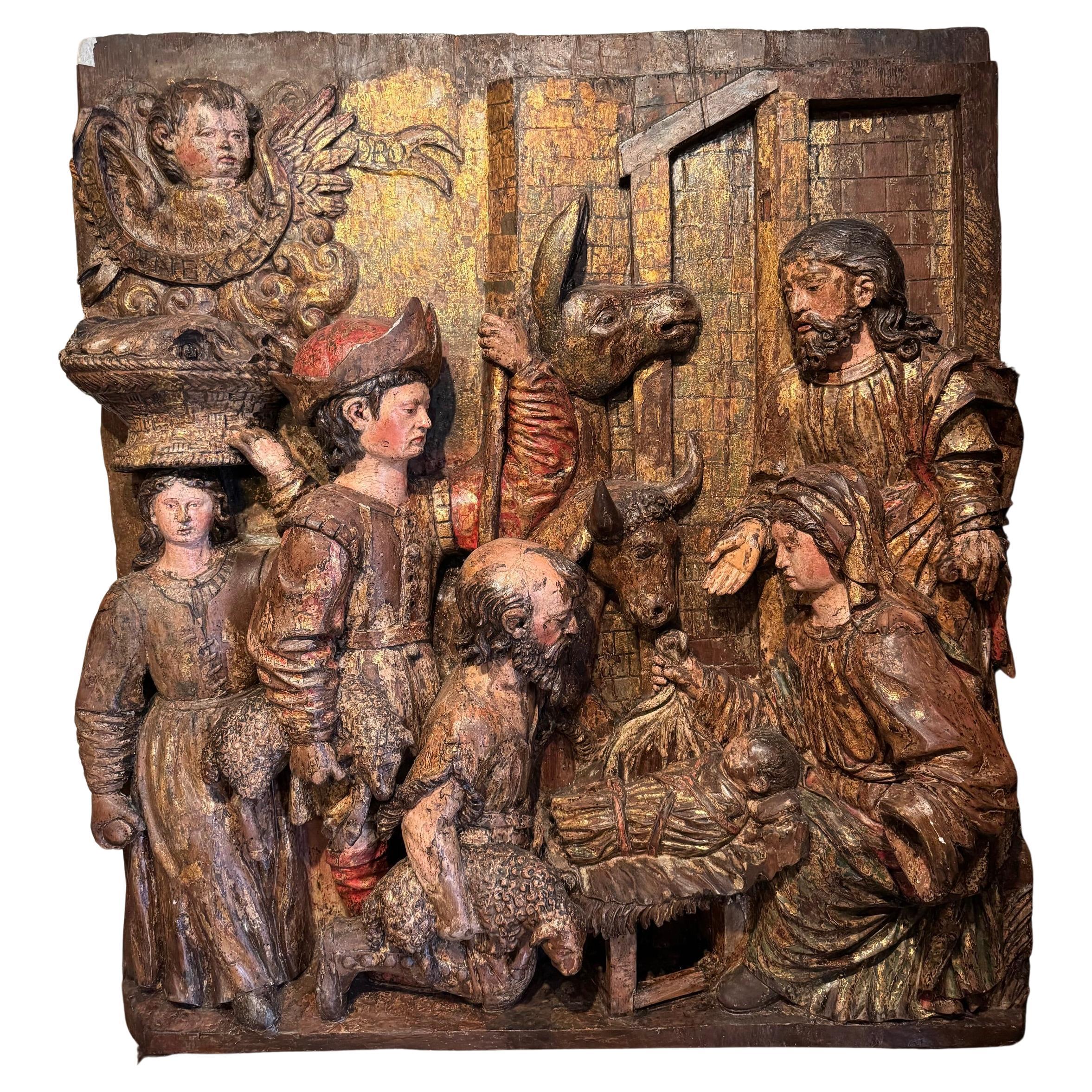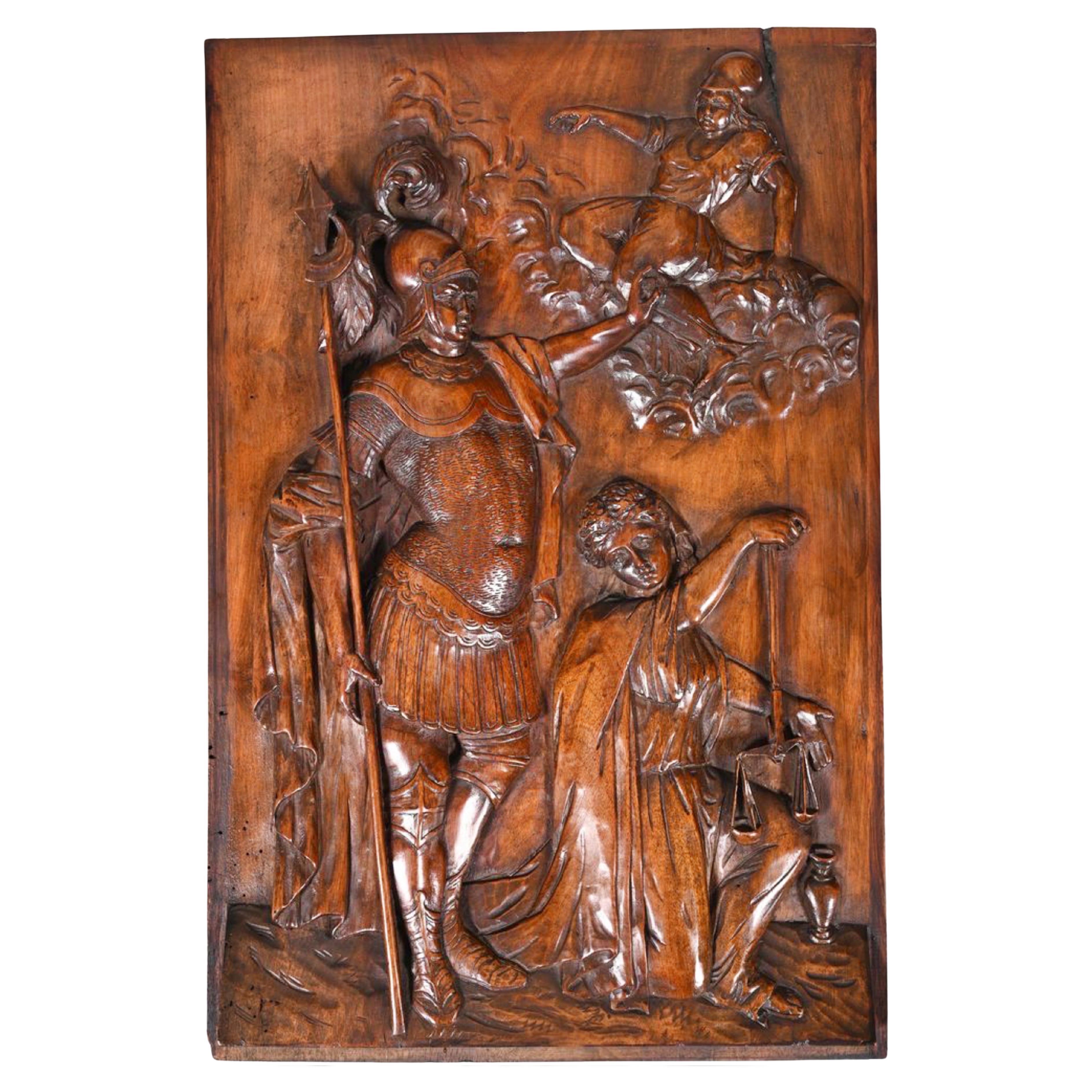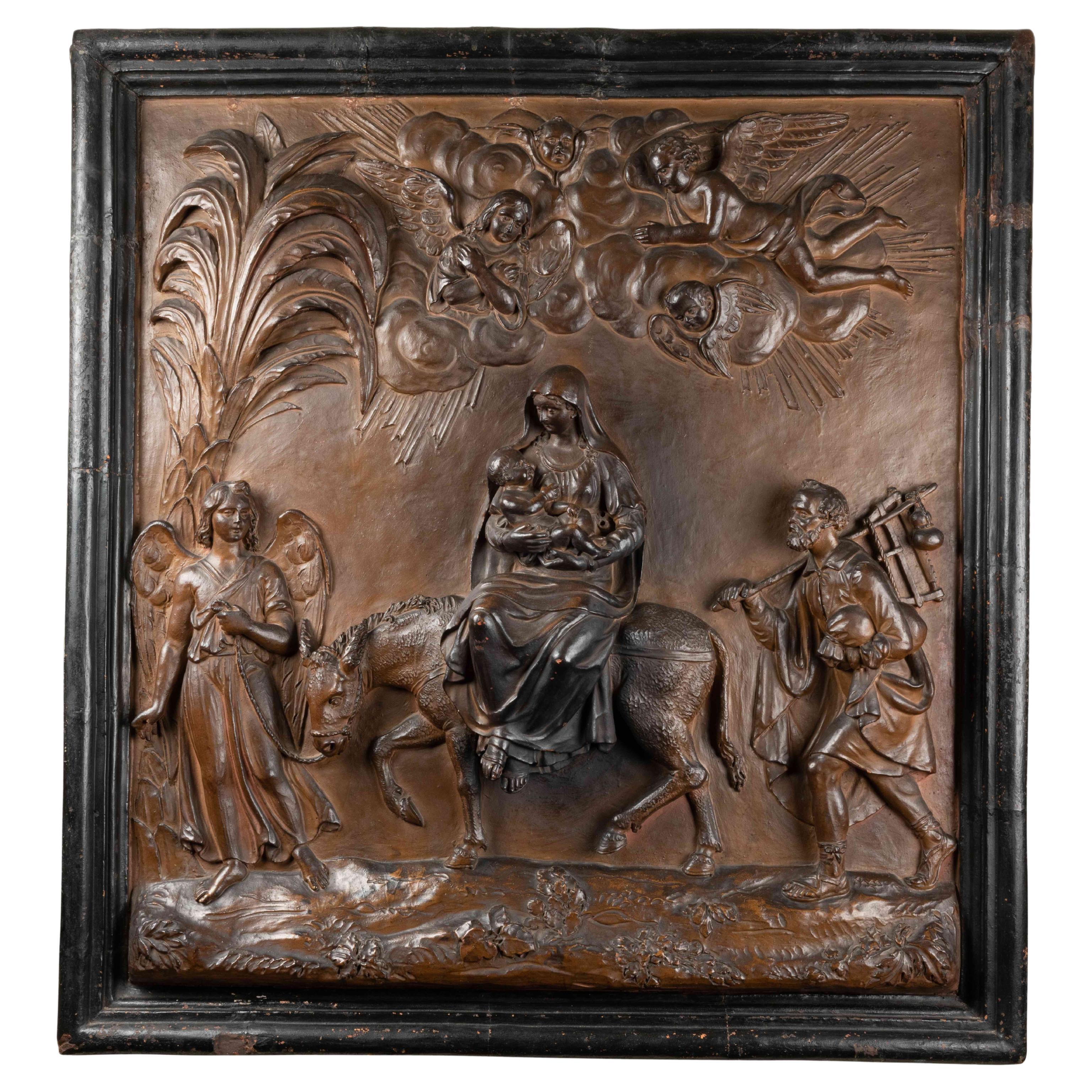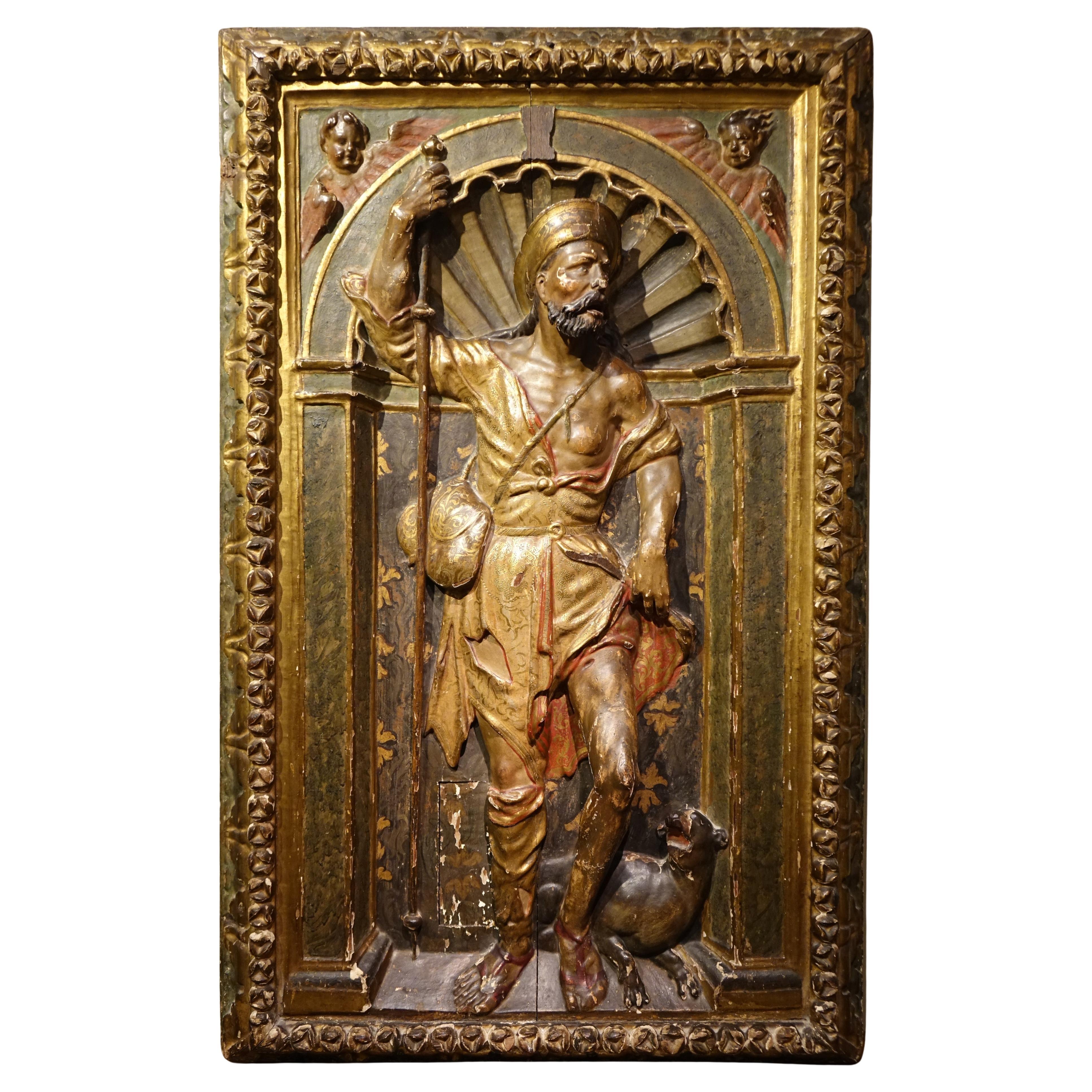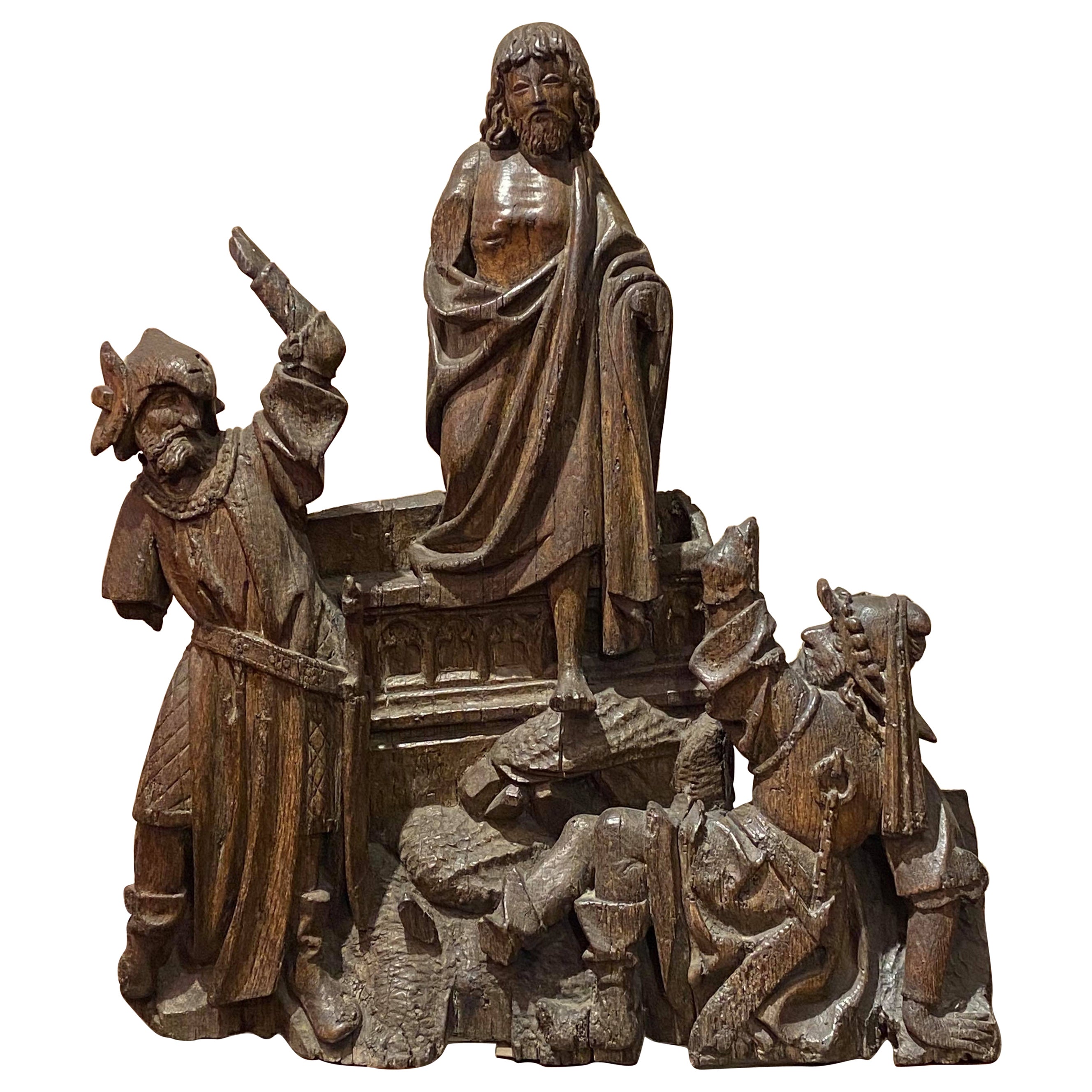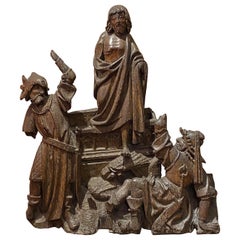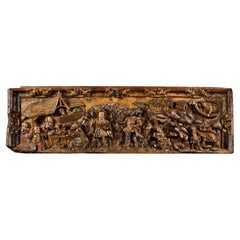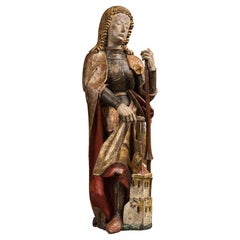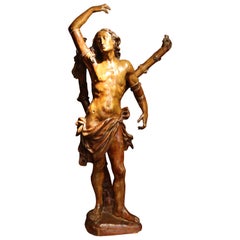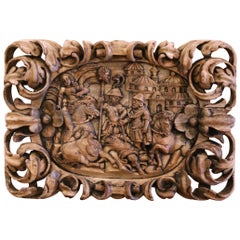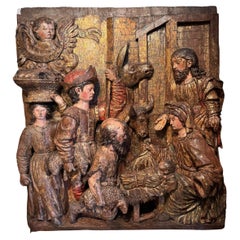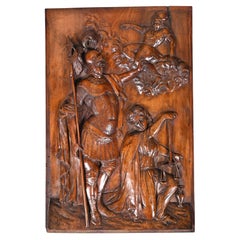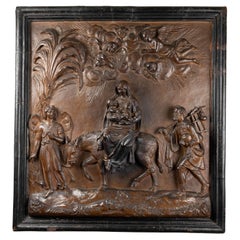Items Similar to Wood Low-Relief Depicting a Werewolf and Saint George
Want more images or videos?
Request additional images or videos from the seller
1 of 5
Wood Low-Relief Depicting a Werewolf and Saint George
$179,395.33
£132,344.24
€150,000
CA$248,344.49
A$269,278.13
CHF 142,902.73
MX$3,316,502.67
NOK 1,771,189.31
SEK 1,671,595.48
DKK 1,142,029.79
About the Item
Exceptional polychrome wood low-relief depicting a werewolf and saint george after a woodcut by lucas cranach (“DER WERWOLF” 1512)
Provenance :
collection Brimo de Laroussihle
collection Mas.
This surprising low-relief, in a very fine condition, was made during the 16th century probably in Würtzburg in the Main Valley, Lower-Franconia where a characteristic school of sculpture flourished from the mid-15th century onwards.
The left-hand side of our low-relief depicts the legend of the werewolf.
In a farm’s courtyard, an unkempt man eats a child. Crawling like an animal, the man is shown turning into a voracious creature that catches and kills everything around him.
Several victim’s body parts are lying around him testifying of its regular attacks.
In the background, a mother raises her arms in despair while her two other children seek refuge by her sides. A man is watching the scene, safely sheltered in a stable.
Further in the back appears a large city.
The right-hand side of the panel represents the legend of Saint George.
The young Trébizonde, born a princess, lavishly dressed, is depicted in the bottom part of the low-relief, praying on her knees. She is kept in cavern by a dragon, of whom we can only see the head. The lady is the last victim the dragon has asked for. Indeed the lamb beside Trébizonde points her out as sacrifice.
On the tortuous path, Saint George is riding a white horse with the princess he freed from the monster. Trébizonde’s parents brings are awaiting for them from the top of a tower.
The crossbowman on the right evokes Saint George’s fight against the dragon.
This low-relief was made after to woodcuts by Lucas Cranach the Elder (1472-1553).
The first one is the famous “Der Werwolf” (162x126 mm), produced by the artist himself around 1512. One exemplar of this engraving is kept in the Cabinet des Estampes in Strasbourg (France). This woodcut has inspired the left-hand part of our low relief.
With no other equivalent in the work of Lucas Cranach the Elder and quite rare in the iconography of this period this peculiar picture might have found inspiration in one of Ovid’s Metamorphoses, the king Lycaon turned into a wolf by Jupiter (Cat n° IV 1). In medieval stories and sermons, such as Geyler de Kaisersberg’s, the werewolf is defined as a savage man, embodying animal’s primitive instincts and danger. As such he was closely related to the devil.
“Der Werwolf” had a mirror woodcut depicting Saint George killing the dragon. This image has inspired the right side of our low relief and sheds a new light on the panel’s symbolic meaning.
The panel is divided by leafless tree in two distinct parts, highlighting the antagonism between man and animal. The animal’s bestiality and foul instincts and on the other side the civilised man embodied by Saint George. He stands as the miles christianus that is the Christian knight.
Indeed Saint George was adopted as patron saint by the crusaders in the Holy Land after the siege of Antioch in 1097. From then on Saint George was considered a model of chivalrous virtues.
A social reading of these woodcuts and of this low-relief must also be done:
Cranach the Elder was Frederick III elector of Saxony’s court painter. While Saint George is the patron saint of the nobility he also acts as a model of virtue for the peasants. Plus on the background, the high perched castle gives a topographic and symbolic vision of the elector’s leading role.
Saint George was also the patron saint of archers and crossbowmen, armourers and feather workers (making the plumes of the knight’s helmets). We can see depictions of those artisans just above the princess.
From the 16th century onwards the worship of Saint George and its ideal of chivalry fades away with the increase of gun’s use and the loss of single combat’s practice.
In 1972, to celebrate the 500th birth anniversary of Lucas Cranach the Elder a travelling exhibition showcasing the most famous works of the artist was produced. This woodcut Der Werwolf -reminiscence of Albrecht Dürer’s Vision of Saint Eustace- was part of this exhibition which went through the following cities:
- Museum of Bielefeld (23.01 - 26.03.72)
- Kunstmuseum Düsseldorf (08.04 - 17.05.72)
- Wallraf-Richartz-Museum Köln (26.05 - 16.07.72)
- Kunstsammlungen der Veste Coburg (16.07 - 30.09.72)
Our low-relief was also exhibited during the exhibition El Salvaje Europeo at the Bancaja Foundation of Valencia and at the Contemporary Cultural Center of Barcelona in 2004. The picture appears in the catalogues, p.18-19 of “El Salvaje Europeo” (Valencia, Spanish language) and p.14 of “El Salvatge Europeu” (Barcelona, Catalan language).
The low-relief also featured in the story “Beaux objets sur le marché” from L’ Œil magazine dated December 1965 – N°132, p.48-49.
Literature
Hommeanimal. Histoires d’un face à face, cat. Exp. Strasbourg, musée archéologique, galerie Heitz, musée de l’œuvre Notre-Dame, Musée d’art moderne et contemporain, 7 avril 2004-4 juillet 2004, Musées de Strasbourg, Adam Biro, 2004.
Represented in Cranach in Coburg, Graphik von Lucas Cranach d. Ä., Lucas Cranach d. J. und der Werkstatt im Kupferstichkabinett der Kunstsammlungen der Veste Coburg, Stefanie KNÖLL, Meike LEYDE, Michael OVERDICK (Hg.), Editions Schnell Steiner, august 2020, page 313
- Dimensions:Height: 38.59 in (98 cm)Width: 37.8 in (96 cm)Depth: 3.94 in (10 cm)
- Style:Renaissance (Of the Period)
- Materials and Techniques:
- Place of Origin:
- Period:
- Date of Manufacture:16th Century
- Condition:Repaired. Wear consistent with age and use. Minor losses. Minor structural damages. Minor fading.
- Seller Location:Saint-Ouen, FR
- Reference Number:1stDibs: LU3115327271652
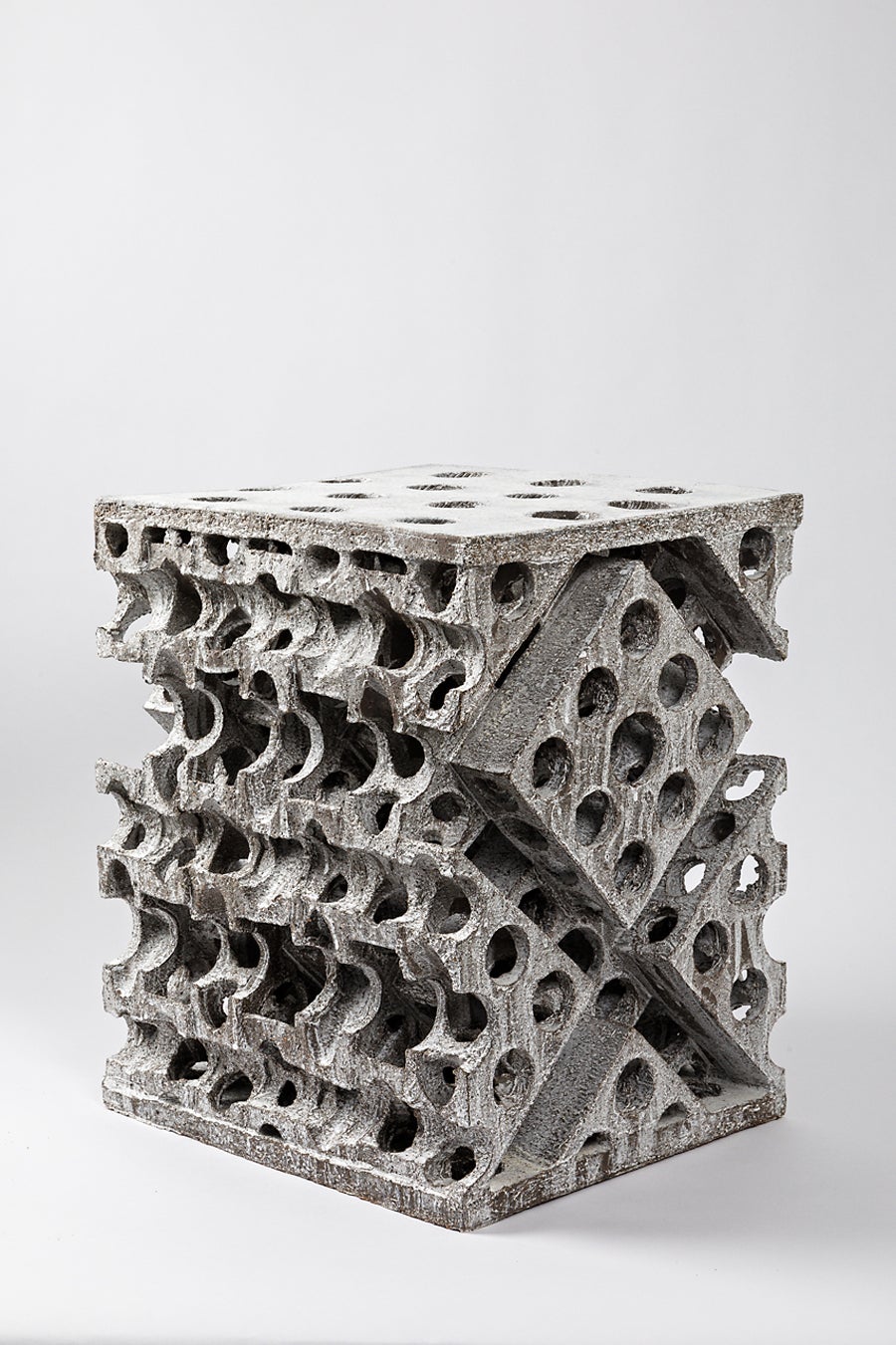
About the Seller
5.0
Vetted Professional Seller
Every seller passes strict standards for authenticity and reliability
Established in 2016
1stDibs seller since 2017
194 sales on 1stDibs
Typical response time: 1 hour
- ShippingRetrieving quote...Shipping from: Saint-Ouen, France
- Return Policy
Authenticity Guarantee
In the unlikely event there’s an issue with an item’s authenticity, contact us within 1 year for a full refund. DetailsMoney-Back Guarantee
If your item is not as described, is damaged in transit, or does not arrive, contact us within 7 days for a full refund. Details24-Hour Cancellation
You have a 24-hour grace period in which to reconsider your purchase, with no questions asked.Vetted Professional Sellers
Our world-class sellers must adhere to strict standards for service and quality, maintaining the integrity of our listings.Price-Match Guarantee
If you find that a seller listed the same item for a lower price elsewhere, we’ll match it.Trusted Global Delivery
Our best-in-class carrier network provides specialized shipping options worldwide, including custom delivery.More From This Seller
View AllCarved Wood Depicting the Resurrection of Christ
Located in Saint-Ouen, FR
Carved wood depicting the resurrection of Christ
ORIGIN : SOUTHERN NETHERLANDS, ANTWERP
PERIOD : EARLY 16th CENTURY
Height : 67.5 cm
Len...
Category
Antique 16th Century Figurative Sculptures
Materials
Oak
15th Century Burgundian Low-Relief Depicting Scenes of the Nativity
Located in Saint-Ouen, FR
Provenance : In the same private collection for several generations, Burgundy.
The canonical Gospels describe briefly the episode of the Nativity. It comprises three parts :
• The Preludes : the Journey to Bethlehem, the Census
• The Nativity
• The Announce to the Shepherds and the Adoration of the Magi
Only the Gospel according to Matthew (2, 1-12) speaks about the Adoration of the Magi. Staying vague about their number it does say they brought the newborn gold, incense and myrrh. The apocryphals, the fathers of the Church and many other authors have filled in the gaps of the evangelic tale. The sobriety and symbolic of the story have been a huge inspiration to artists. Although one of the oldest depictions of the Adoration of the Magi dates from the 2nd century the theme became very popular in Christian art during the late 14th century. One of the reasons explaining this success is that it celebrates both the Virgin and Christ at the same time.
This important walnut panel is carved in a strong relief and depicts the different steps of the story of Jesus’ birth.
On the left, the donkey and ox that have accompanied Mary and Joseph from Bethlehem are depicted behind a trough. On the thatch roof appears the star that would guide the magi to the place of birth of Jesus.
Mary is wearing a veil and is seating on a bed. She holds her baby at arm’s length to present him to the magi. Saint Joseph is by her side. The old man is holding a cane in his left hand while from the right hand he seems to uncover himself to greet the visitors.
A woman assists to the scene.
In front of the holy family the three magi stand behind one another to pay their homage to the newborn.
The first magi has a pointed beard. He is already kneeling out of deference and has placed his crown to his feet. He gives the baby a hanap filled with gold coins. This is Melchior as the legend describes him with white hair and a long beard.
Caspar, the second magi bears a cup of incense. He is looking at the third magi and with his right hand he points to the star that has guided them there. He has a short beard and wears crakow shoes, breeches and a wide sleeved doublet.
Finally Balthazar, the elegant last magi proceeds proudly towards the holy family with his one hand on the saber’s hilt and the other holding a cup. He brings the divine child the myrrh. He probably just dismounted as the horse can be seen behind him.
The scene is set in a very detailed and narrative decor. In the right part of the panel the shepherd receive the announce of Jesus’ birth. An angel comes down from heaven with a scroll bearing the good news in his hands. The herding dog sleeps peacefully while sheeps graze. At the top of the cliff we notice the gilded sheeps enclosure.
The panel’s moulded frame is carved with a foliated decor. In it’s centre appears a coat-of-arms. It is the alliance of the three magi’s arms. Indeed as it was common for legendary figures the three of them received imaginaries coat-of-arms. Thus, on a field of azure stands a star for Melchior, a crescent for Caspar and a pennon for Balthazar.
This high-relief panel is undeniably the work of a very skilled and imaginative artist. This key moment in the New Testament is transposed to a contemporary environment thanks to the figures’ clothing and the rural daily life scene. This way the universal dimension of the episode is highlighted allowing a better understanding for the contemporaries.
The sculptor has represented the episodes of the Adoration of the Magi and the Announce to the Shepherd with great talent and numerous details giving life to a picturesque and narrative scene. The important traces of polychromy give those already very animated scenes a stronger pictorial power and a rich dynamism.
Because of the picturesque and familiar realism so dear to the artists of the late Medieval era, of the didactic function of this type of panel as well as the quality of the sculpture this piece is an astounding example of Burgundian art of the 15th century.
Literature
Louis Réau, Iconographie de l’Art chrétien...
Category
Antique 15th Century and Earlier French Gothic Figurative Sculptures
Materials
Walnut
Carved Polychrome Wood Depicting Saint Florian
Located in Saint-Ouen, FR
CARVED POLYCHROME WOOD DEPICTING SAINT FLORIAN
ORIGIN : SWABIA, SOUTHERN GERMANY
PERIOD : LATE 15th CENTURY
Height : 98 cm
Length : 29 cm
Depth : 24 cm
Polychrome limewood
Very fine condition
Provenance
- Swiss collection STAEHELIN-PARAVICINI - March 1939
- Auction Jacob Hecht -18 April 1929, Berlin
- Sammlung Prof Q.A. LEIMHAAS Munich, Helbing - 26 May 1908
(Research by Thierry Fraslin)
During the Middle-Age Saint Florian was particularly popular, subject to worship in Austria -Tyrol- Bavaria and Bohemia. Embodying courage and commitment Saint Florian was invoked to protect the soul of the living against sins and to keep the soul of the deads from the purgatory.
From the mid-15th century he safeguards from water and fire. The legend has it that when he was young the saint had contained the fire of a burning...
Category
Antique 15th Century and Earlier Figurative Sculptures
Materials
Wood
Carved Wood Saint Sebastien, Southern Germany, c. 1510-1520
Located in Saint-Ouen, FR
Carved wood Saint Sebastian
Origin : Southern Germany
Period : c. 1510-1520
Measures: Height : 146 cm
Width : 67 cm
Depth : 30 cm
Walnut
Good condition
According to Jocobus de Varagine’s Golden Legend Sebastian was born in Narbonne where he was promoted head of the first cohort by emperors Maximian and Diocletian who were fond of him. One day as Marcellin and Marc were condemned because of their Christian faith Sebastian urged them to not give away. He would then convert many Roman soldiers before being reported to Diocletian. The emperor had him tied against a post in a middle of the Field of Mars and pierced by the soldiers’ arrows. Sebastian did not die and recovered thanks to Irene’s good care. Once he had recovered from his injuries he went to the palace to critized the emperor’s attitude towards Christians. Sebastian was beaten to death.
Following the common iconography Saint Sebastian is here depicted leaning against crooked tree with his arms tied with ropes.
His peaceful face presents a straight nose and small lips framed by his hair locks. His head turned to the right side is slighlty tilted backwards as if he was gazing at the sky.
Saint Sebastian body’s is gracefully presented in contrapposto. Almost completely naked a single piece of draped cloth is tied on his right hip and fall over his left knee. The carved folds give the fabric the realness of a heavy cloth.
The arrows wounds are still visible. The saint’s anatomy with its bulging muscles and protruding ribs illustrate the sculptor’s skills. The right arm’s movement enlivens the sculpture.
The artist who authored this sculpture knew how to breathe grace and life to his work through the expression of the saint’s face...
Category
Antique 16th Century Figurative Sculptures
Materials
Wood
15th Century Carved Wood Depicting Saint James
Located in Saint-Ouen, FR
The Saint depicted here is Saint James the Great.
James is the brother of St. John the Evangelist. Nothing is known of his activities after the Ascension...
Category
Antique 15th Century and Earlier French Gothic Figurative Sculptures
Materials
Oak
16th Century Southern Germany Wood Figure of Saint Roch
Located in Saint-Ouen, FR
Easily recognizable with his gesture of showing pest effect on his thigh this pilgrim saint is accompanied by an angel curing him. The quality of the wood is noteworthy.
Bibliography
Louis Réau, Iconographie de l’Art Chrétien...
Category
Antique 16th Century German Renaissance Figurative Sculptures
Materials
Wood
You May Also Like
17th Century French Carved Bleached Ebony Plaque "The Conversion of Saint Paul"
Located in Dallas, TX
Decorate a wall with this intricately antique panel. Crafted of ebony wood in France circa 1680, the plaque depicts the dramatic biblical scene of "The Conversion of Saint Paul on th...
Category
Antique Late 17th Century French Baroque Religious Items
Materials
Ebony
Adoration of the shepherds - Large high-relief, Northern Italy Circa 1500
Located in PARIS, FR
Large high relief in carved and gilt wood, with many traces of polychromy, representing the Adoration of the Shepherds.
The evangelist Luke first mentions that the scene takes place at night. A sudden light, which frightens the shepherds, signals the arrival of an angel who announces "great joy". He gives them a sign: they will find "a newborn baby wrapped...
Category
Antique 16th Century Italian Renaissance Figurative Sculptures
Materials
Wood
Amazing French ALLEGORICAL PANEL in walnut 17th Century
Located in Madrid, ES
Amazing ALLEGORICAL PANEL in walnut 17th Century
Magnificent quality wood, inspired by a 1617 panel from the Louvre.
Justitia represents justice, equity and order and Mars embodies ...
Category
Antique 17th Century French Baroque Decorative Art
Materials
Wood
Large Terracotta Relief - Lombardy, First Half of 17th Century
Located in Bruxelles, BE
Large Terracotta relief of the flight into Egypt
Lombardy, first half of 17th century
Painted terracotta
91 x 85 x 11,5 cm
This event in the early life of Christ is recounted i...
Category
Antique 17th Century Italian Baroque Figurative Sculptures
Materials
Terracotta
$62,190 Sale Price
20% Off
Mi-relief en bois doré et polychromé, représentant saint-Roch. Espagne , 16e S.
Located in PARIS, FR
An important bas-relief in carved wood with traces of gilding, in an architectural frame with two cherubs in the spandrels, representing Saint Roch.
He is considered to be the patro...
Category
Antique 16th Century Spanish Renaissance Figurative Sculptures
Materials
Giltwood
Antique Decorative Wall Panel Carved with Mythical Scene
Located in Wormelow, Herefordshire
An intricately carved 19th century antique wooden wall panel depicting a mythical or biblical scene. It details what appears to be three mythological beings, possibly witches or sorc...
Category
Antique Late 19th Century German Medieval Wall-mounted Sculptures
Materials
Wood, Boxwood
More Ways To Browse
Wood Relief
Wood Relief Sculpture
The Crusades
Carved Wood Relief
George Dragon
16th Century German
Knight Helmet
Polychrome Saint
Antique Knight Helmet
Saint George Dragon
German Renaissance Wood Furniture
Low Relief Sculpture
George Knight
4 Panel Mirror Room Divider
Devil Mirror
Heart Carved Furniture
Lifesize Sculpture
Nigeria Sculpture
